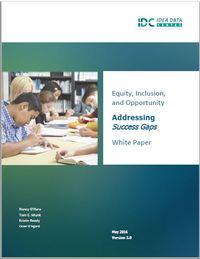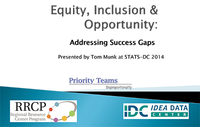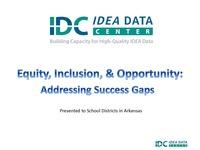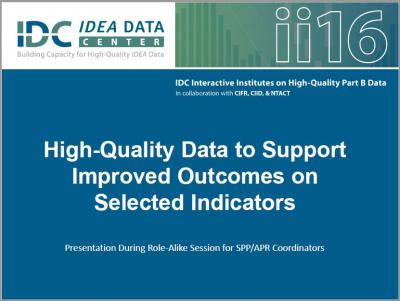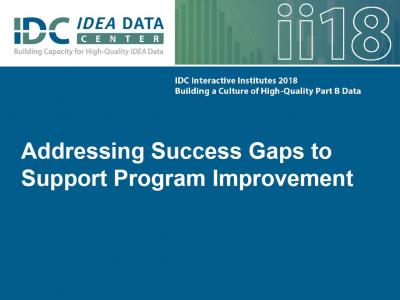Site Search
Results 1 - 7 of 7
Format: Guides, Papers, and Reports
Equity, Inclusion, and Opportunity: Addressing Success Gaps, White PaperThis white paper focuses on elements of equity, inclusion, and opportunity that can minimize or eliminate success gaps among different groups of students. It provides the research-based background that guided development of a complementary rubric that schools or districts can use to systematically examine the root causes of success gaps among groups of their students. The white paper has been updated recently and now includes considerations for children as young as preschool.
Format: Presentations
Equity, Inclusion and Opportunity: Addressing Success GapsThe presentation introduces a research-based guidance document and self-assessment rubric designed to help districts and schools identify the root causes of "success gaps" (for example, in test scores, suspension or graduation rates, or course credits) for some groups of students, thereby helping schools to improve and equalize results for all students.
Format: Presentations
Equity, Inclusion, & Opportunity: Addressing Success GapsThis presentation introduced the audience of local education agency personnel to new tools, the Equity, Inclusion, and Opportunity: How to Address Success Gaps Rubric and the Equity, Inclusion and Opportunity: How to Address Success Gaps White Paper. The rubric and white paper were developed by a group of OSEP-funded technical assistance providers, with input from states and other experts. The Equity, Inclusion, and Opportunity: How to Address Success Gaps tools provide a process for reducing the differences in school success among subgroups of students by providing a structure for districts or schools to examine their current practices and identify areas for improvement.
Format: Presentations
High-Quality Data to Support Improved Outcomes on Selected IndicatorsThis interactive role-alike presentation for SPP/APR Coordinators engaged states in discussion and dialogue around their experiences with select APR Indicators that address student outcomes. The session included one state's experiences with capturing and using high-quality data and how the data are used to inform the APR and drive decisions for selecting and implementing strategies to improve student outcomes. Participants were encouraged to share their state's examples to improve the APR and student outcomes.
Format: Presentations
Using Data to Explore and Prepare for Expected Changes to Significant Disproportionality: What Should Your State Be Thinking About?To address the disparities experienced by minority students with disabilities, the U.S. Department of Education is proposing a new Equity in IDEA Rule. During this session, presenters used data examples to guide states through a series of questions regarding how the Notice of Proposed Rule Making might affect significant disproportionality calculations, analysis, and decision-making. Presenters also introduced IDC’s Success Gaps Toolbox, which can help states and local school districts in determining root causes of significant disproportionality.
Format: Presentations
Addressing Success Gaps to Support Program ImprovementThis session described success gaps and a process for identifying root causes of success gaps in achievement, graduation rates, or other results. This process can help teams dig deeply into a variety of data sources to identify and develop a plan to address gaps when not all students are experiencing equitable opportunities for learning and progressing.
Format: Presentations
Using the Success Gaps Toolkit to Support Improvement ActivitiesLEAs in all states have many improvement initiatives underway at any one time. This workshop described how state and local staff can use the Success Gaps Toolkit to align various needs assessments and improvement strategies and use the data generated to support improved results for students with diverse learning needs. One state shared how it uses the Success Gaps materials with LEAs and some of the lessons it has learned.


